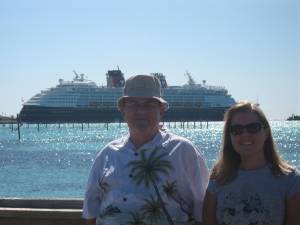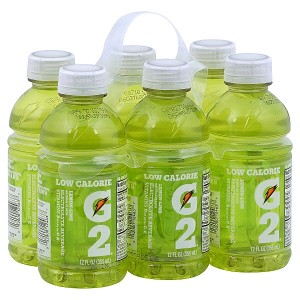Disney is an industry leader when it comes to accessible tourism, and their cruise ships are no exception.

All aboard!
In November, my father and I took a 5 day Bahamian cruise on the Disney Wonder. We didn’t want to commit to a longer cruise in case there were accessibility issues. You never know – yes, this is Disney we’re talking about, but it also a ship. The restaurants, shops, showrooms, spa, pools, even their private island are all accessible. And of course the Cast Members are more than happy to assist you in any way, including accommodating any dietary needs.

A massage on the beach at Castaway Cay = Heaven! They can fill up quickly so book ahead of time, before you leave or at the Open House.
Some areas are more accessible than others. For example, if you’d like to book a pedicure be aware that the chairs are not really accessible because they require the guest to climb up a couple of pretty big steps – without any sort of handrail. If you’d like a pedicure discuss your needs with the salon staff and they will be happy to accommodate you. If you’re looking to book spa and salon experiences, be sure to stop by the “Open House” on the first day of the cruise and check out the facilities to see what will work for you.

Just relaxing on our private balcony - can I just live here?
We were lucky enough to book an accessible stateroom – these are limited. I have friends who have cruised with Disney a few times and one of them uses the same scooter as I do, they don’t book an accessible room because they don’t need the modified facilities. They simply ask the crew to remove the coffee table so there is more room for the mobility scooter.
The ship is equipped with elevators, ramps, and wide doorways – making the ship pretty much entirely accessible. The one problem I encountered was the thresholds. Some of them came to a pretty steep peak and my scooter would get stuck, but there was always someone there to help me. After about a day or so, and a lot of bottoming out of my scooter, I learned which doorways to avoid and everything was fine.

Check out my ride! Taking in the ocean air on Castaway Cay’s adults only beach after my massage. Life it rough!
Disney’s private island, Castaway Cay is very accessible. From the disembarking process to providing free sand wheelchairs – they’ve done everything possible to ensure mobility challenged passengers can really enjoy this island. The tram that takes you from various locations on the island is accessible and everything is pretty flat making exploration easy. You may run into some trouble if you want to take on the beautiful sandy beaches, but that’s when you grab a sand wheelchair – but

I couldn’t make this stuff up!
heed the warning on the back of the chair: “Not a floatation device. Do not attempt to propel in water.” Which only means that at some point someone had a few two many Mai Tai’s and attempted that.
Please note that depending on your cruise itinerary, the ports of call may require you to tender (take a smaller boat) to shore and the accessibility of this type of transfer can vary from port to port and be dependant on weather conditions. The port in Nassau, Bahamas didn’t require a tender transfer so going ashore was pretty easy there. We even managed to flag down an accessible taxi to take us to and from the Atlantis Resort – which was very accessible too. The main shopping area of Nassau offered various levels of accessibility. There were curb cut outs on just about every corner, but the shops and restaurants were hit and miss with accessible entrances – however, most of them were wheelchair friendly.

Me and Gilligan, just kidding, that’s my dad
An added bonus…. The children are “contained” in their own little world on the ship. They are not running around the decks causing chaos and knocking over us gimpy, balance-challenged folk. Disney has designed amazing interactive areas for kids of all ages to enjoy. That coupled with the many adults only areas of the ship makes avoiding potential tripping hazards, disguised as cute little princes and princesses, easier. The easy assumption is that a Disney Cruise is taken over by kids, it is not. Other cruise lines have fewer offerings for the younger sailors and therefore they get bored and end up running all over the ship. It may sound counterintuitive, but if you want to enjoy some grown up cruising – then hop on board with Mickey! No, seriously. The fitness center, spa and salon are all adults only. There is an adults only area on the pool deck which includes a pool, hot tubs, bar, and coffee bar. There is even an adults only restaurant for a small additional fee and an adults only area on Castaway Cay. It is worth noting that the adults only restaurant was the only “up sell” I encountered, unlike other cruise lines where there are numerous ones making the phrase “all inclusive” a bit of a stretch, in my opinion.
I would highly recommend the Disney Cruise Line to anyone looking to sail the high seas.










